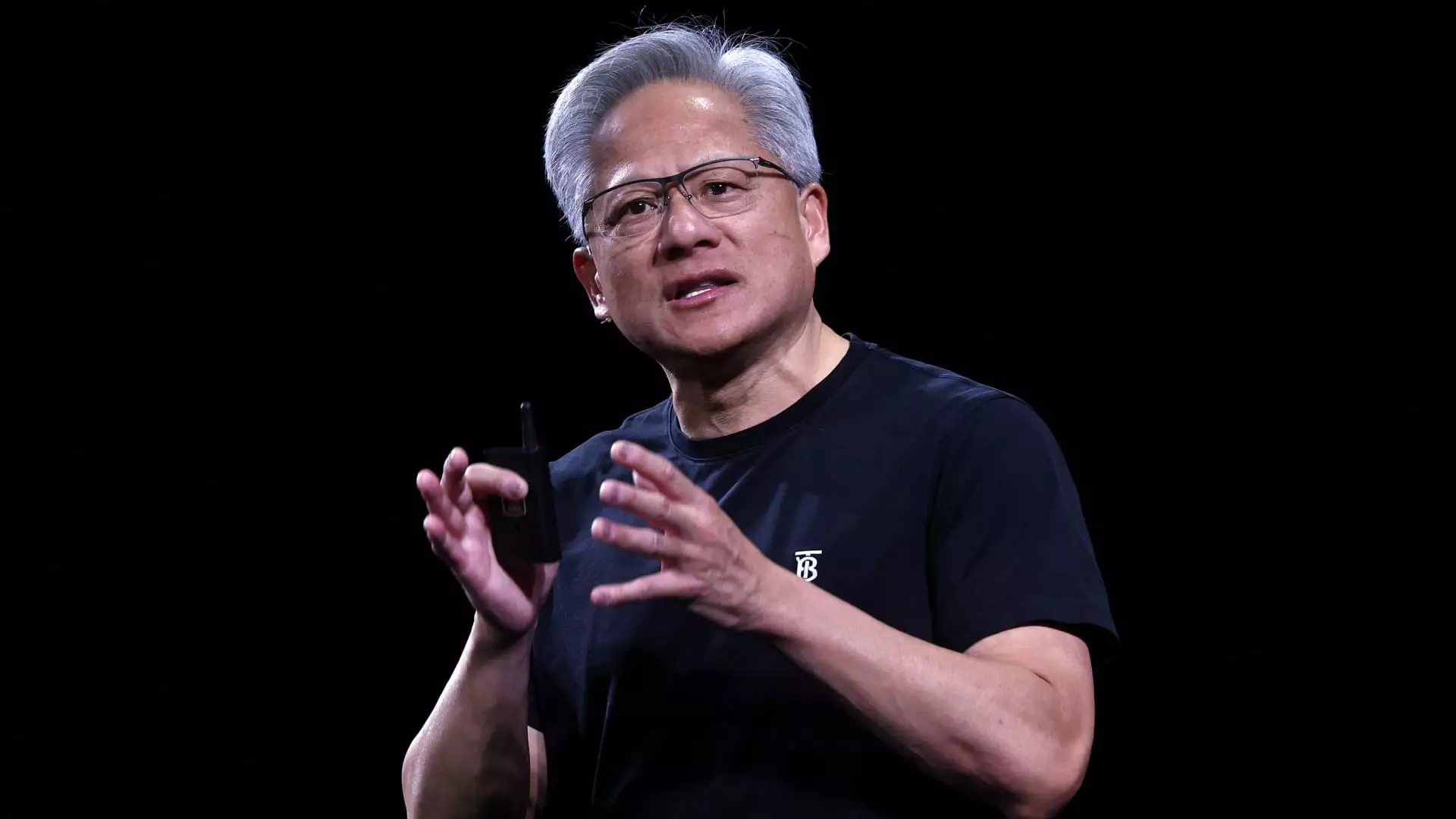In the whirlwind of European tech events, one figure stands out with striking clarity: Jensen Huang, the charismatic CEO of Nvidia. This week, Huang has taken audiences by storm, presenting Nvidia not simply as a tech company, but as a crucial actor in the next era of artificial intelligence. His electrifying presence at venues like London Tech Week and the GTC event in Paris has been likened to that of a rock star, with eager crowds hanging on his every word. There’s a palpable excitement surrounding Huang that raises intriguing questions about the potential and pitfalls of Nvidia’s ambitions in building the AI infrastructure of Europe.
Huang’s ability to captivate reflects not just his personal magnetism but the compelling narrative he spins around Nvidia’s role in shaping the future. He argues that artificial intelligence should be regarded as fundamental infrastructure, akin to electricity or the internet. This analogy is powerful, and it resonates deeply with policymakers and business leaders alike. After all, in a world increasingly reliant on data and technology, the stakes for countries to develop their own AI ecosystem have never been higher. Yet, while Huang’s message is optimistic, the context is riddled with complexities that demand a critical eye.
The Quest for Sovereignty in the AI Landscape
One of the most provocative concepts Huang introduced is that of “sovereign AI,” suggesting that nations should build data centers within their borders, managing their data independently rather than outsourcing it to foreign servers. This notion is already a hot topic among European nations grappling with the implications of relying on overseas technology giants. The urgency is manifold—ranging from data privacy to national security concerns. Yet, the pathway toward achieving this goal is fraught with challenges. Europe’s ability to coordinate a comprehensive, joint approach to AI infrastructure will require a level of collaboration and unified vision that has often eluded the continent amid its diverse political frameworks.
As Huang highlighted during his talks, this collaborative effort must also extend to firms like French startup Mistral, which aims to build an AI cloud leveraging Nvidia’s advanced GPUs. This partnership symbolizes the kind of ingenuity that could be pivotal for Europe, but it also underscores a vital point: achieving self-sufficiency in AI infrastructure won’t simply be about hardware; it will necessitate an ecosystem that fosters innovation at all levels, from startups to established tech giants. The rhetoric of collaboration must be matched by actions that support nascent companies instead of merely defending entrenched interests.
The Elephant in the Room: Competition with China
While Huang paints a thrilling picture of Europe’s future in AI, he does not shy away from discussing the broader geopolitical landscape, particularly the competition with China. The current US export controls preventing Nvidia from selling advanced chips to China could inadvertently throw a wrench in the gears of global AI progress. As Huang pointed out, despite the limitations, Huawei and other Chinese tech firms are charging ahead, innovating at a rapid pace. This raises the specter of a bifurcated technology ecosystem where nations might lean towards Chinese AI solutions, thereby sidelining American companies.
Huang’s frank acknowledgment of this imbalance leads to an unsettling insight: should countries choose to embrace Chinese technology over American, it could lead to a staggered technological race where the latter only narrowly competes. This moment of candor allows us to envision a two-tiered future, one where nations are forced to choose sides in an escalating tech cold war, with potentially far-reaching consequences on innovation and security.
Visionary Statements That Demand Action
Huang’s predictions that we are entering the “decade of autonomous vehicles and robotics” and that quantum computing is at an “inflection point” present us with thrilling possibilities. These advancements, if realized effectively, could propel us into realms we once thought impossible. Yet these bold proclamations come with an implicit responsibility; they compel both public and private sectors to prepare adequately for such changes.
The time is ripe for Europe not just to talk about possibilities but to create an action plan that supports this vision. Public investment, regulatory frameworks, and conscious partnerships across industries will be essential to make Huang’s forecasts a reality. The tech revolution’s pulse is quickening, but without a coordinated and proactive approach, Europe risks falling behind in a race it cannot afford to lose.
With so much energy directed towards the potential of AI, the narrative surrounding its development must evolve from mere aspiration to assured actions that match the urgency of Huang’s vision. The future of Europe’s AI landscape is not a predetermined path—it is a challenge that requires a concerted effort, an ambitious agenda, and an unwavering commitment to sovereignty in a digital age. The excitement that Huang brings is infectious, but let’s remember that enthusiasm must be paired with rigor to navigate the complexities ahead.



Leave a Reply